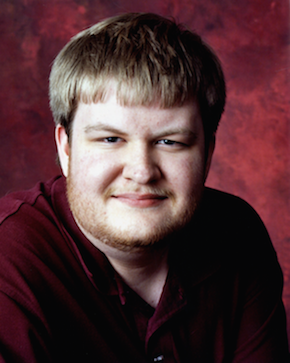The Keys to Lighting Design in HOWs

Name: Chase Walton
Title: Special Consultant for Lighting Design
Company: Hope Church, Memphis, TN
Lighting design for houses of worship is one of the fastest-growing segments of commercial AV integration. As more HOW transition from traditional to contemporary or alternative styles, effect lighting has become a crucial element of an engaging worship experience. Let's say you're an AV integrator thinking about branching out into lighting, or perhaps you've even done a bit of lighting for theatres, but never HOW. What sort of unique challenges might you encounter?
Mega-church vs. Mega-bucks
Contemporary and alternative styles are where growth is happening, so a HOW that's interested in lighting design is probably going to be pretty big. It's logical to conclude that a HOW with an expansive campus(es) would have an appropriately large budget for lighting. Not necessarily. A lot may be spent on sound or video (or size of the room), but next to nothing on lighting.
I assisted one mega-church with over 7,000 weekly attendances and a $25 million room that had an annual budget of only $10,000 for lighting. That was for everything—including folks to run lights every week! If you find yourself in this situation, try some bang-for-your-buck alternatives and work up. Add colored gel or gobo breakup patterns to existing PAR or ellipsoidal fixtures to provide variation and interest on the stage or other surfaces. Maybe throw in a light dusting of haze. Affordable LED wash fixtures are a great way to create color-changing set pieces with a more modern look. Be careful with some budget LEDs, though. Their refresh rate may cause flicker for video production.
A daily selection of the top stories for AV integrators, resellers and consultants. Sign up below.
The Volunteer Factor
Unlike other live performance venues with in-house lighting staff, HOW may not provide a knowledgeable lighting professional to interface with you and to detail specific needs or goals. In fact, the personnel at a HOW may be volunteers who have never worked with lighting before—or maybe dabbled with it back in high school for their glee club. Special care must be taken to design a lighting system that a HOW can actually use and to patiently educate people on how to get the most out of it. Fortunately, there are some powerful new lighting control products on the market, such as the MA Lighting dot 2, which are user-friendly and particularly well-suited to this application.
Style Is Everything
Style of worship varies dramatically and has a huge impact on the scope of lighting a HOW needs. A lighting rig that is perfect for choir, organ, and pastor is entirely wrong for a big rock show that rivals touring acts. Sometimes the lighting rig must be invisible, or it will offend big donors. I just recently finished a project where it was unacceptable for any lighting truss to be visible directly behind the cross, which was located over the front edge of the stage. In other cases, the rig might be a central element of the scenic design. Some HOW require broadcast levels of light on stage, while others want it super dark and moody. A few HOW may host touring acts that require arena-style access to power and rigging. It’s essential to obtain specific details about a given HOW’s style, and highly recommended to actually visit and observe their experience in action prior to unveiling your master plan.
Safety First
Cool lighting is awesome, but it’s accompanied by things people tend to forget: dim house lights and atmospheric effects like haze and even pyrotechnics. Dim house lighting can be a safety hazard if areas of the room that are tricky to navigate—stairs or ramps—do not remain adequately illuminated. This lighting needs to be focused and controlled to avoid distracting from the presentation on stage. Architects may be unaware these conditions will exist in a HOW and, consequently, design house lighting that is great at moderate or high levels, but unsafe at dimmed levels. Similarly, fire detection is vital for safety, but the system engineer may not realize that haze will be present in the room and HVAC equipment. Certain types of smoke detectors cannot tell the difference between theatrical smoke and actual smoke from a fire—and trip whenever the room is hazed. In some cases, the fire marshal may limit the number of times per year that atmospheric effects can be used, or forbid them entirely (especially true of pyro). It is important to let everyone know about atmospheric effects, so other system contractors can adapt accordingly.
Houses of Worship are an exciting new horizon for AVL integration, with the added benefit of offering a service to the community. HOW are undergoing a transition of sorts to attract the next generation of worshippers, so this is a good time to get involved. Just be patient, guide them along, learn with them, and you can build a productive and beneficial relationship that lasts for decades.
Chase Walton is special consultant for lighting design at Hope Church in Memphis, TN. He is also a technical editor at PMI, a firm specializing in acoustics and system design for high-end home theater, production, broadcast, and recording studio applications.
